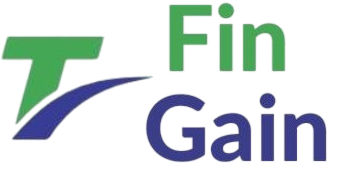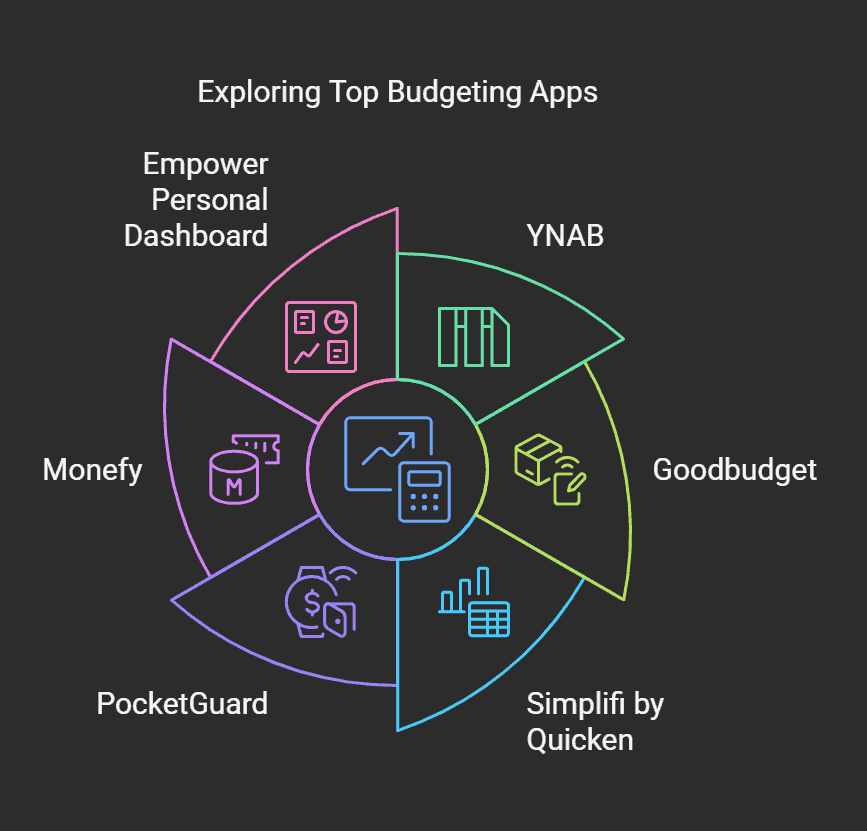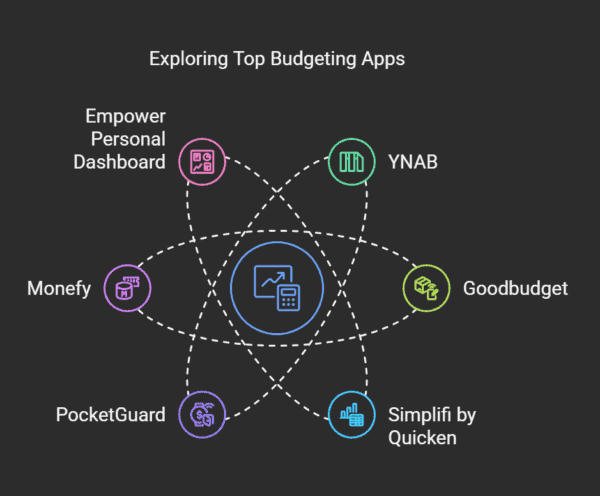Top Budgeting Apps: Your Guide to Financial Mastery
Managing finances can be challenging, but budgeting apps have made it easier to track expenses, set goals, and maintain financial health. Here, we explore six of the top budgeting apps that cater to various needs, from comprehensive financial management to simple expense tracking.
1. YNAB (You Need A Budget)
Overview: Ideal for individuals with serious long-term financial goals.
Key Features:
- Real-time transaction syncing
- Zero-based budgeting approach
- Goal-setting tools
- Debt payoff tracking
- Detailed spending reports
Positive Side: YNAB’s structured approach ensures every dollar is accounted for, making it perfect for those with long-term financial goals.
Negative Side: It can be a bit complex for beginners due to its detailed budgeting method.
Download Links:
- YNAB for Android
- YNAB for iOS
2. Goodbudget
Overview: Based on the envelope budgeting system, it helps manage finances without linking bank accounts.
Key Features:
- Virtual envelope system for budgeting
- Syncs across multiple devices
- Manual transaction entry
- Debt payoff tracking
Positive Side: Goodbudget’s envelope system is great for hands-on budgeters who prefer manual control over their finances.
Negative Side: The manual entry of transactions can be time-consuming.
Download Links:
3. Simplifi by Quicken
Overview: Offers a user-friendly dashboard and effective budgeting tools.
Key Features:
- Exceptional user experience
- Flexible budgeting tools
- Excellent transaction management
- Reports and savings goals
Positive Side: Simplifi provides a seamless and intuitive user experience, making budgeting straightforward and enjoyable.
Negative Side: Some users may find the subscription cost a bit high compared to other apps.
Download Links:
- Simplifi for Android
- Simplifi for iOS
4. PocketGuard
Overview: Simplifies budgeting by showing how much disposable income is available after accounting for bills and goals.
Key Features:
- Connects bank accounts, credit cards, and loans
- Tracks net worth
- Manual tracking option available
Positive Side: PocketGuard’s “In My Pocket” feature helps users avoid overspending by clearly showing available disposable income.
Negative Side: The app’s simplicity might not offer enough detailed budgeting tools for advanced users.
Download Links:
- PocketGuard for Android
- PocketGuard for iOS
5. Monefy
Overview: Makes tracking daily expenses enjoyable and straightforward.
Key Features:
- Intuitive interface
- Multi-currency tracking options
- Easy backup and exporting features
Positive Side: Monefy’s user-friendly design and multi-currency support make it ideal for frequent travelers.
Negative Side: It lacks some advanced budgeting features found in other apps.
Download Links:
6. Empower Personal Dashboard (formerly Personal Capital)
Overview: Primarily an investment tool but includes helpful budgeting features.
Key Features:
- Connects checking, savings, and investment accounts
- Spending snapshot by category
- Net worth tracker
Positive Side: Empower Personal Dashboard offers a holistic view of your finances, combining budgeting tools with investment tracking.
Negative Side: Its primary focus on investments might not suit users looking for a dedicated budgeting app.
Download Links:
Conclusion
Choosing the right budgeting app can significantly impact how you manage your finances. Whether you’re looking for comprehensive financial management or simple expense tracking, there’s an app that can meet your needs. YNAB, Goodbudget, Simplifi, PocketGuard, Monefy, and Empower Personal Dashboard are among the top budgeting apps that can help you take control of your financial future.
FAQs
Q1: What is the best budgeting app for beginners? A1: Simplifi by Quicken is highly recommended for beginners due to its user-friendly interface and comprehensive budgeting tools.
Q2: Which budgeting app is best for long-term financial goals? A2: YNAB (You Need A Budget) is ideal for individuals with serious long-term financial goals, thanks to its zero-based budgeting approach and goal-setting tools.
Q3: Can I use a budgeting app without linking my bank account? A3: Yes, Goodbudget allows you to manage your finances using a virtual envelope system without linking your bank accounts.
Q4: Which app is best for tracking daily expenses? A4: Monefy is excellent for tracking daily expenses with its intuitive interface and multi-currency tracking options.
Q5: Are there any budgeting apps that also track investments? A5: Empower Personal Dashboard (formerly Personal Capital) is primarily an investment tool but includes helpful budgeting features, making it suitable for those who want to manage both spending and investments.
Q6: What is the most cost-effective budgeting app? A6: PocketGuard is a great option for those looking for a cost-effective solution, as it offers essential budgeting features and helps manage disposable income effectively.
Which app do you think would suit your needs best?
External Sources:-
- YNAB for Android
- Goodbudget for Android
- Goodbudget for iOS
- Simplifi for Android
- PocketGuard for Android
- Monefy for Android
- Monefy for iOS
- Empower Personal Dashboard for Android
- Empower Personal Dashboard for iOS
____________________________________________________________________________________________________
- Home: Stay updated with the latest financial news and trends.
- Market Updates: Explore real-time analysis, expert insights, and breaking news covering various financial markets.
- Investment: Learn about various investment strategies to navigate market volatility.
- Personal Finance: Enhance your financial literacy with tips on budgeting, saving, and more.
- Financial Tools: Utilize powerful financial tools like budget calculators and investment trackers.
10 Job Interview Tips and Proven Strategies to Avoid Common Pitfalls


